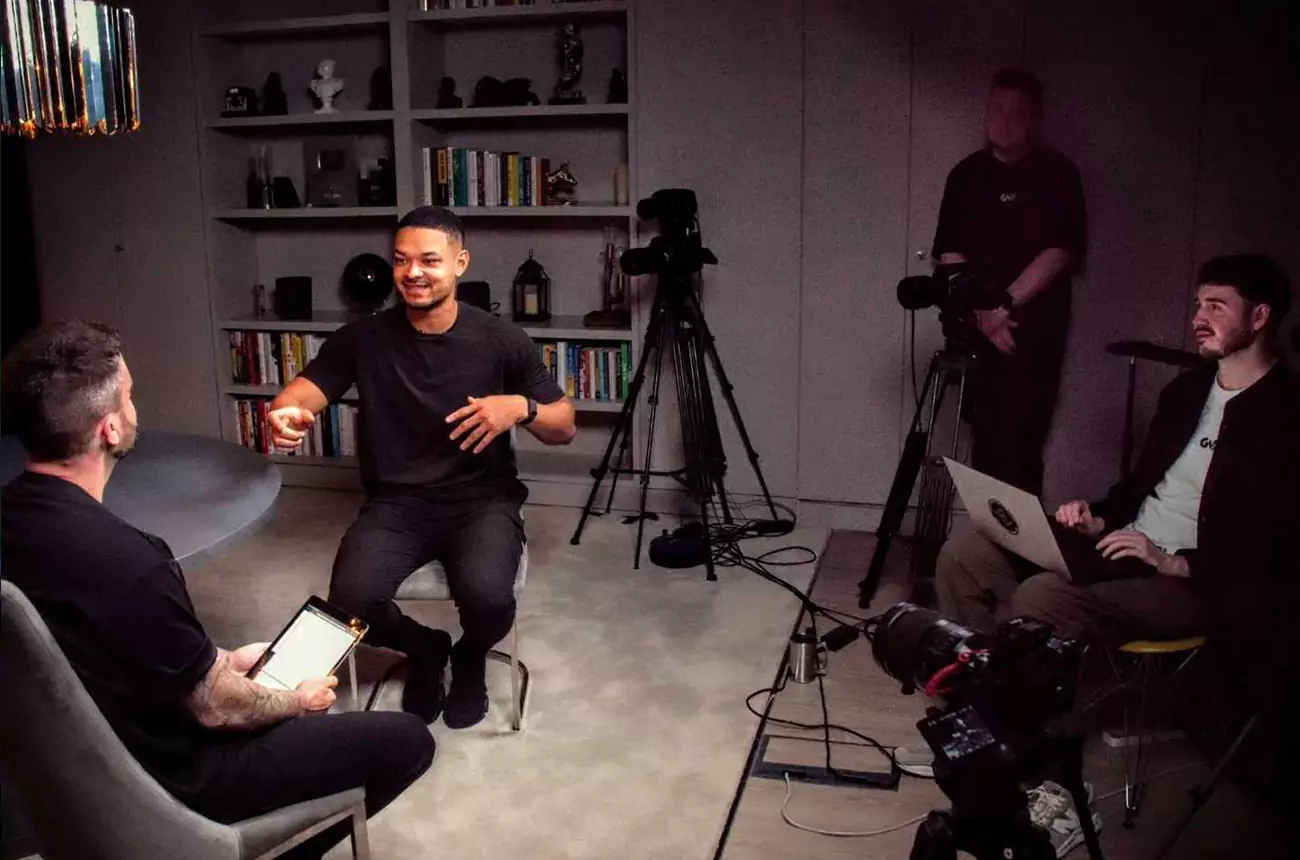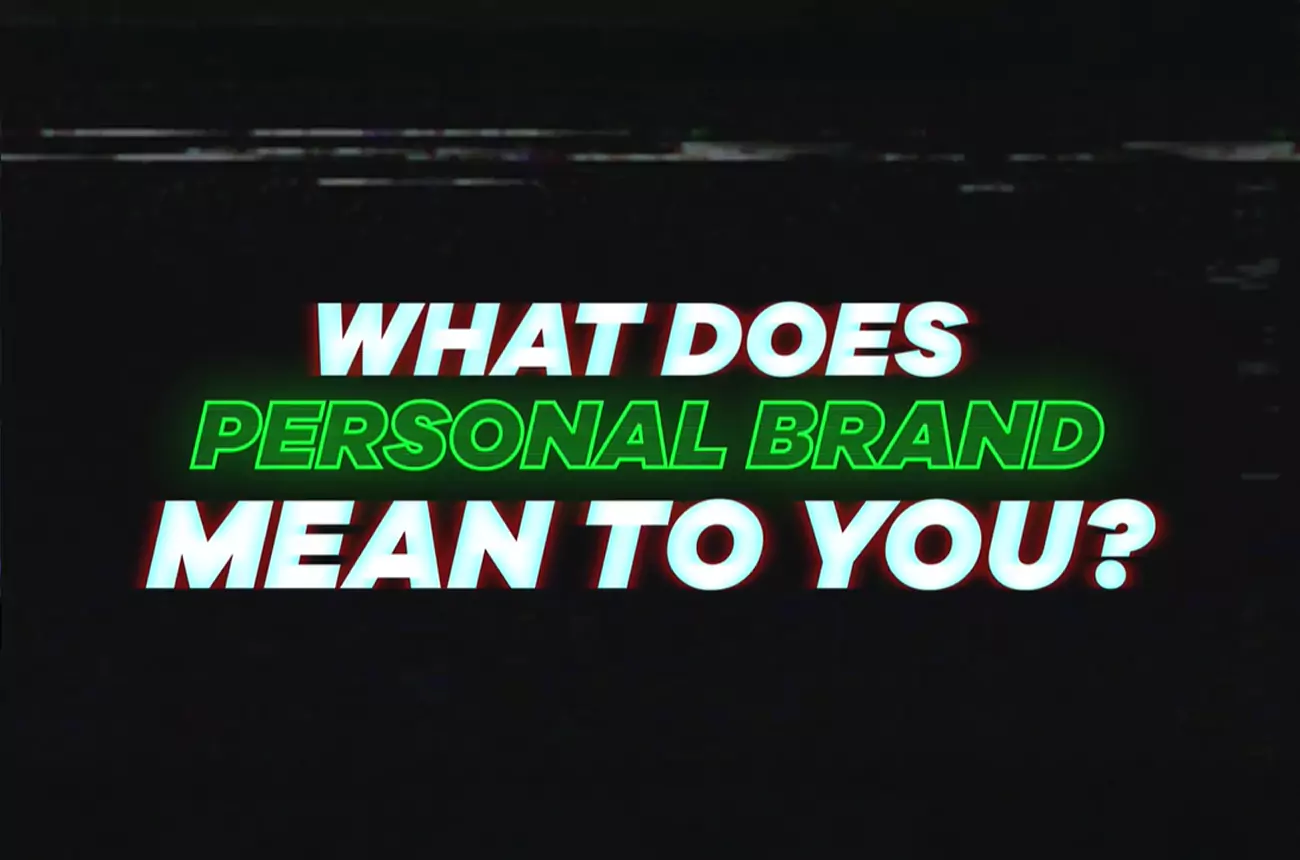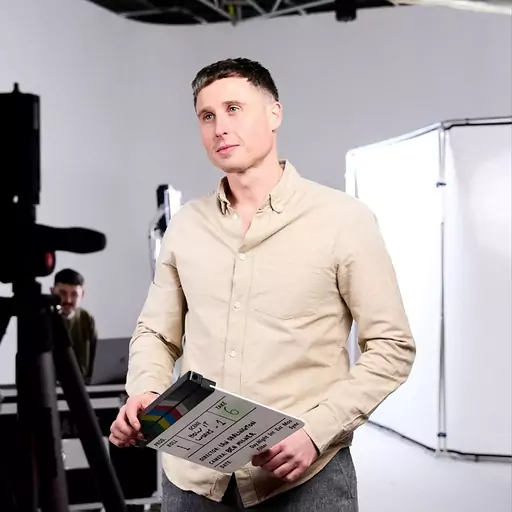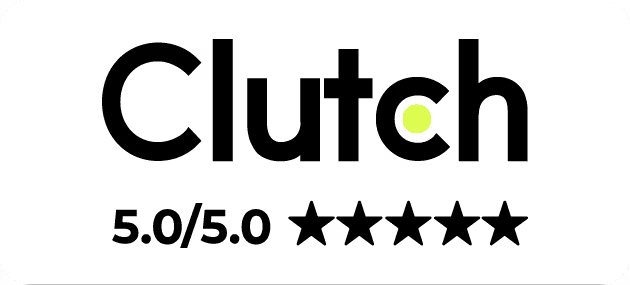A Guide to Starting Your Own Podcast



How I helped launch The Overlap (700 million views) and worked with The High Performance Podcast (100 million plus), and what you can take from them when starting your own.
I joined THG Studios as Production Lead in 2021. THG was already the global leader in online beauty and sports nutrition, with hundreds of brands on the books. Traditional ad campaigns, spending hundreds of thousands on one ad wasn’t working like it used to, so brands needed a new way to reach audiences.
At the same time, there was a boom in the creator space. Big UK names like the Sidemen and Steven Bartlett were taking off, using a completely different video strategy. And it was working.
So, we looked at how we could bring those formats into our content team. My job was to help tell brand stories in a way people actually wanted to watch. One of the most important formats we used, maybe the most important, was podcasts.
In this resource, I’ll share some of the wins we took away and that work for two of the UK’s biggest shows: The Overlap (700 million views) and The High Performance Podcast (100 million plus).
This in-depth look into that journey is designed to help you avoid the early mistakes we made and break through faster with a podcast that actually works for your brand.
Why Most Podcasts Fail - And How to Avoid the Same Mistakes
90% of podcasts don’t get past episode three. So if you’re understandably fired up about starting your own podcast, just be mindful. Without the right guidance, you’ll likely end up joining that statistic.
Even fewer make it past episode 20. But that’s good news. Because if you can make it past 21 episodes, you’re already in the top one percent of podcasts in the world.
The key is to understand where the 99 percent go wrong, and avoid their mistakes. And the good news is, after reading this, you’ll know exactly how to do that.
Is Starting a Podcast Worth It for Your Brand?
Worldwide podcast listenership exceeded 500 million in 2023, and it’s projected to reach 650 million by 2027.
That’s a lot of people. But truthfully, when you dig into these numbers, it’s often a podcast or marketing company behind the data, so it’s hard to call them unbiased.
Part of our promise is to advise you based on real-world experience.
Cards on the table, we think it’s worth it. For our founders, podcasting helped grow an audience and community that later supported product launches and service sales. And I’ve seen first-hand the numbers a podcast can generate, both in terms of eyeballs watching and the direct link to leads and revenue.
As a Studio Director, and host of a podcast myself, I can honestly say it’s the most cost-effective way to build trust, grow an audience, and create a full content bank to keep your socials active.
But none of that is true if you mess up the foundations. So let’s start there.
Phase 1: Consistency – Your Competitive Advantage
Batch-cooking meals can help people consistently lose weight. The practice consists of preparing all the meals of the week in one go.
It saves them time and removes the temptation of missing a healthy meal later in the week (when their motivation to do so might be on the slide).
At GNG Studios, we apply the same logic to our content production.
We batch-record podcasts and videos.
It reduces the impact on other businesses' activities and means that after only a couple of days of filming, we’ve got enough video content to fill our social calendar. Here’s how we do it.
Planning Topics That Won’t Run Out After a Few Episodes
We start by identifying the topics we think our audience would find interesting. With a brand podcast, we obviously try to tie these to the service or product we’re ultimately looking to promote.
You want to brainstorm lots of ideas here. One of the reasons so many podcasts fail is because the host has one or two good ideas for topics and conversations, jumps straight in, and after burning through those, they realise the format doesn’t have legs. Energy and interest drop. Welcome to the 90 percent of podcasts that don’t make it.
So it makes sense to spend a decent amount of time planning your episode topics and conversation points before you even think about filming or recording.
Make sure the format and topics have enough scope to be worth your time and energy.
We then group those topics into episodes. Bullet points suggesting interesting talking points are enough. You want conversation prompts, not full scripts.
Choosing Guests You Actually Want to Talk To
We then identify a wish list of guests for each topic. We usually include more than one guest per topic, as not everyone is going to respond or agree to appear.
These are people you think would result in a great conversation. That’s the key to a successful podcast. Don’t just try to land someone for their name or status. The conversation has to be meaningful. And for that to happen, you, or your podcast host, must genuinely be interested in the topic. Audiences can feel a fake conversation in their bones.
And the best guests aren’t necessarily the best-known names. We’ve had amazing conversations with previously unknown people within our sector. In fact, on a brand podcast, it’s very unlikely your audience will have heard of your guests before. But this is a good thing. New people have new stories. No one needs to hear another version of a celebrity story that’s already been told a hundred times.
And don’t be afraid to be strategic with your guest selection. On a brand podcast, guest selection can help you network with clients and businesses you’d otherwise struggle to engage.
Let’s say you own a training company and want to sell your services to a large retailer. If you have a podcast, you can target the L&D leaders within those businesses and invite them on to talk about their experience. This is a low-pressure way to network, demonstrate your knowledge and expertise, and later have a natural sales conversation if it makes sense to do so.
With guest options identified, we then make an approach and explain why we think they’d enjoy the experience and what the potential return on investment could be for them. It’s not enough to send a DM saying, “wanna be on my podcast, mate?”
Anyone worth speaking to gets messages like that every week. If you want to attract great guests, you have to stand out and offer something different.
This approach has got us conversations with Steven Bartlett, Beard Meats Food, Carrie Rose, Chris Williamson, Justin Welsh, and Paddy Galloway. All leaders in their sector, all very busy people. But our bespoke approach, and making the experience sound genuinely enjoyable, landed the gig.

Recording Multiple Episodes Without Derailing Your Week
With topics and guests confirmed, we create shoot plans to make sure we can record multiple episodes in a single day. The number you can record will depend on the length of your podcast.
We’ve comfortably filmed four episodes in a day with guests. It can be a long one, but the pay-off is worth it.
Phase 2: Creating Podcasts People Watch - Our Podcast Formula
You want people to watch and listen to your podcast. And while there’s no cookie cutter process for guaranteed success, there are plenty of lessons to learn from the world’s most popular shows.
Here are some tips to help more people watch your podcast, based on our own experience and what we’ve learnt from studying the world’s best.
Step 1 - Start with a Teaser That Makes People Stick Around
For a brand podcast, especially if you’re just starting, you need to show the viewer why they should stick around. The best way to do that is with a ‘coming up’ style trailer.
“Always grab the reader by the throat in the first paragraph.” — Paul O'Neill
You want this section to be impactful. It should grab attention and make the viewer want to keep watching.
Lots of the best podcasts use this format, including this clip from The High Performance Podcast
You can achieve this by reviewing the full conversation and identifying the sections that stand out to you. Interestingly, when we interviewed Steven Bartlett about his podcasting process, we found out he has a secret button under the desk that he presses when he thinks a guest has said something insightful that would be good to include in the trailer or clip up. That’s elite level. But for the vast majority of us, it's simply a case of reviewing the conversation and building a trailer from the highlights.
Step 2 - Add a Podcast Stinger - Then Get Straight Into It
Next, we recommend adding a stinger (a type of animated video transition). We usually add the podcast title, but podcast artwork works just as well. Keep it really short. Nobody wants to watch a fancy 30-second intro. Get to the good stuff.
Our team builds bespoke stingers using the Adobe suite, but if you’re doing this solo, you can use simple free software like Canva.

Step 3 - Set Up the Guest - Don’t Make Them Do the Work
We’ve been on, and studied, a huge number of podcasts. And my number one complaint is when the host opens with:
“So, tell our audience what it is you do.”
It’s lazy hosting, and it puts too much pressure on the guest.
You’ve invited them on, so it’s your job to tell your audience why they should be interested.
We like to do an introduction down the camera, directly addressing the audience. Much like a written post for socials, it follows this formula:
- Pain
- Agitate
- Intrigue
- Positive Future
- Solution
This is a format we’ve seen repeatedly in the world’s best-performing podcasts. Here’s a great example from the Rich Roll Podcast, where Rich sets up his guest perfectly and explains why it’s worth a watch:
Step 4: Have a Real Conversation, Not Just a List of Questions
Now you’re into the main section of the podcast. What are you teaching or discussing?
It’s difficult to attract big names early on, so instead, we focused on people we genuinely found interesting. That doesn’t necessarily mean people you agree with 100 percent either.
You can often catch people on the up this way. If you find them interesting, chances are others will eventually too.
The ideal episode length depends on the content. If you’ve delivered what you wanted to in 15 to 20 minutes, why drag it out just to hit some arbitrary time target?
Joe Rogan can put out a four-hour episode because he’s built up his audience's trust over thousands of episodes. You don’t have that yet, so keep it short and useful.
The key is conversation. You don’t want the podcast to feel like a list of questions you’re rattling through. It’s tough as a host to guide the direction, stay present in the chat, and listen actively. That’s where having a director helps.
If we notice a section running too long, drifting off topic, or even a moment that deserves more time but gets skipped, we’ll give a nudge.
Authentic conversations always land better. Fake it and people feel it. So make sure the topic genuinely interests you. It shows.
Step 5 - Podcast Outro - Wrap Up Properly, Don’t Just Trail Off
According to Spotify 80% of listeners listen to all or most of every podcast episode they start. So, don’t forget to sign off by:
- Thanking your listeners
- Thank your guests
- Recap the episode, and summarise your thoughts
- Include a CTA (like subscribe to the channel or share the conversation if they’ve enjoyed it)
Step 6 - Distribution - Turn One Episode into a Month’s Worth of Content
Once recorded, we pre-schedule content for release. Each podcast gives us:
1 x Full Episode Per Month
- Shared on all major podcast platforms.
1 x Podcast Trailer
- Used to promote the episode on release day across all platforms.
3 x Highlights Per Month
- Shorter 10–15 minute clips that drive traffic to the full episode. Plus, some people prefer bite-sized content over committing to a full show.
6 to 12 x Shorts Per Month
- We’re seeing over 50% of channel views coming from Shorts on new YouTube channels. There’s still a lot of organic reach available on TikTok and Instagram Reels. Shorts work well for driving traffic to your YouTube channel and full episodes.
Multiple Social Clips
- We also pull shorter clips to post on platforms like LinkedIn. These get banked and repurposed when topics start trending, giving you a reactive marketing asset
YouTube Video Upload Best Practices
Here’s our upload checklist for every podcast video:
High-Res Thumbnail
- Make your podcast stand out in feeds.
SEO Tags
- Improve searchability, relevance, and visibility in recommendations.
Chapters
- Help viewers skip to the section they want. Also boosts SEO.
Info Cards
- Referencing a past episode? Link it here.
End Screen
- Add a subscribe button and link to the next episode.
Captions
- Auto-generate them through YouTube for accessibility.
Pinned Comment
- Add a link to your call-to-action. For example, a newsletter or next episode.
Consistent Podcast Titles
- Get to the point fast. Clear, short titles outperform vague or over-clever ones.
Key Takeaways: Want Your Brand Podcast to Actually Work?
Creating a podcast can feel overwhelming. That’s why so many fail. But we’ve helped multiple brands launch successful shows using the principles in this resource. Here’s a recap of the actionable advice:
Plan before you pitch
Build your format and topic list before you think about filming. That way, you won’t run out of ideas and join the 90% who stop early. If you can’t map 20+ episodes, the format needs work.
Conversations beat interviews
Don’t just tick through questions. Good podcasts feel like real conversations. Having direction on set makes a massive difference.
Batch to stay consistent
Record 3 to 4 episodes in a day. You’ll end up with weeks’ worth of content across long-form, highlights, Shorts, and social posts, all without disrupting your usual work.
Get ROI from every episode
Sweat the assets. Don’t just upload and move on. A good edit team can turn one episode into a full content bank. Highlights, Shorts, promos, quotes, it all adds up.
Think strategic guests, not big names
Use your guest list to build credibility, open doors, and deepen relationships in your market. The most valuable guest isn’t always the most famous.
As I said at the start, video podcasts give us and our clients the biggest bang for their buck when it comes to video. So I strongly recommend launching one this year. There’s still loads of opportunity to become the go-to podcast in your space.
When you’re ready, we’ll help you launch one worth watching. If you’ve got a project in mind, tell us about it. We’ll advise on the best way to get going based on our experience.
don't miss a beat
Subscribe to our newsletter and Keep up to date on the latest resources we release.
Featured resources
Your Website Needs These Videos

From company intro to how-it-works, this guide shows what content high-performing websites use to stand out and convert.

Why Most Adverts Don’t Work

Most ads get ignored. Here’s how brands are swapping forgettable campaigns for content people want to watch.

A Guide to Starting Your Own Podcast

Lessons from launching The Overlap and High Performance, and how to make your podcast last.


